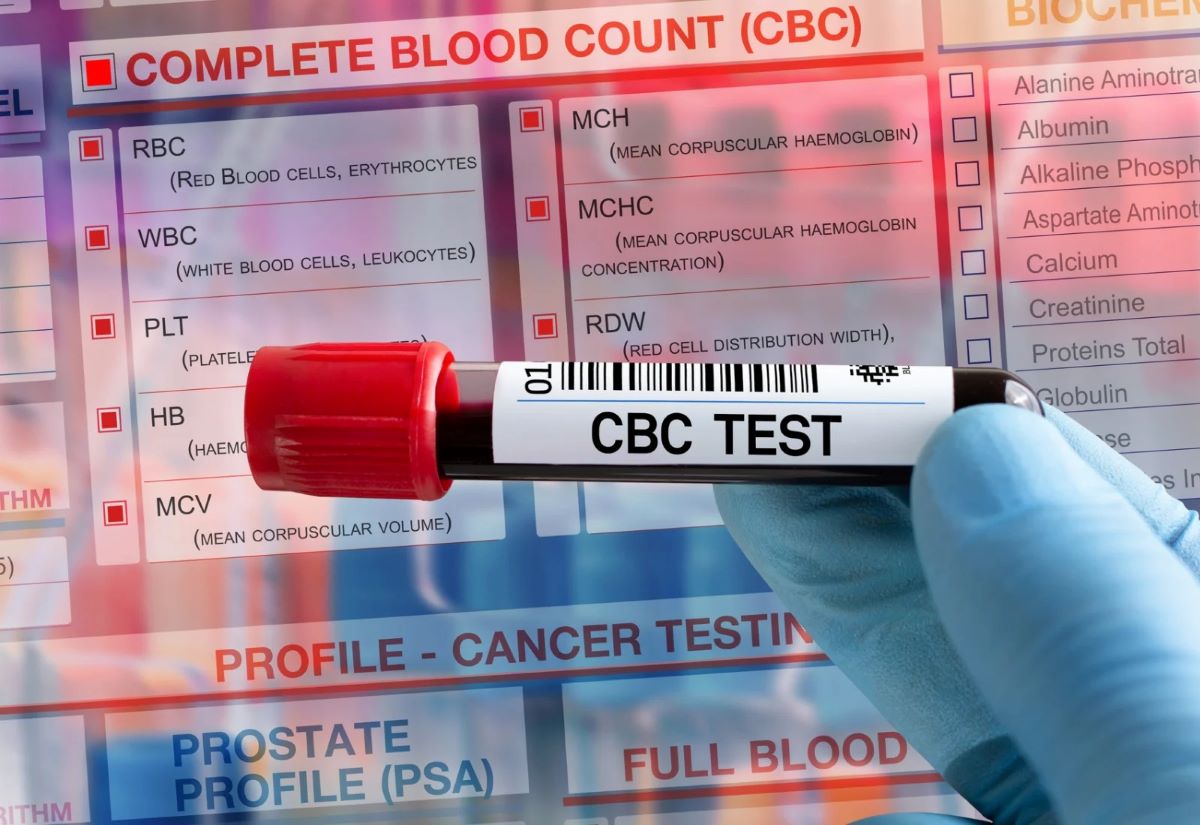Home>Finance>How Much Does A Broken Bone Cost Without Insurance?


Finance
How Much Does A Broken Bone Cost Without Insurance?
Published: November 5, 2023
Discover the financial impact of a broken bone without insurance and find out how much it may cost you. Plan for unforeseen medical expenses and explore options to secure your finances.
(Many of the links in this article redirect to a specific reviewed product. Your purchase of these products through affiliate links helps to generate commission for LiveWell, at no extra cost. Learn more)
Table of Contents
- Introduction
- Understanding the cost of medical treatment
- Factors influencing the cost of broken bone treatment
- Hospital charges for broken bone treatment
- Costs of diagnostics and imaging
- Surgical and non-surgical treatment options
- Other medical expenses associated with broken bone treatment
- Options for financial assistance without insurance
- Consequences of not seeking timely treatment
- Conclusion
Introduction
Accidents happen, and unfortunately, one of the most common injuries people experience is a broken bone. Whether it’s a fractured arm from a fall or a broken leg from a sports mishap, a broken bone can be painful and disruptive to your life. But besides the physical discomfort, many people also worry about the financial implications of seeking treatment for a broken bone, especially if they don’t have health insurance.
Without insurance coverage, the cost of medical treatment can be a major concern. While it’s difficult to provide an exact figure for the cost of a broken bone without insurance, it’s important to understand the factors that can influence the overall expense. From hospital charges to diagnostics, surgery, and follow-up care, the total cost can vary significantly based on several factors.
In this article, we’ll delve into the various aspects of the cost of broken bone treatment without insurance, shedding light on the potential expenses involved and providing insights into options for financial assistance. It’s crucial to note that the information provided here is for educational purposes only and should not be considered as financial or medical advice.
Understanding the cost of medical treatment
Before diving into the specifics of the cost of treating a broken bone without insurance, it’s essential to have a general understanding of how medical costs are determined. The cost of medical treatment can vary widely, depending on several factors.
First and foremost, the location plays a significant role in determining medical expenses. The cost of healthcare can vary significantly from one region to another. In urban areas, where living costs tend to be higher, medical treatment may come with a higher price tag compared to rural areas.
The severity and complexity of the broken bone also impact the cost. In more complicated cases that require specialized care or surgical intervention, the expenses tend to be higher compared to less severe fractures that can be treated with non-invasive methods.
Additive costs include diagnostics, such as X-rays or MRI scans, which are crucial to assess the extent of the injury and determine the appropriate treatment plan. These diagnostic tests can add to the overall expense.
It’s important to note that the cost of medical treatment is not limited to the immediate care of the broken bone. Follow-up visits, physical therapy, and rehabilitation may be required depending on the type of fracture and the individual’s recovery process. These additional treatments can incur further expenses.
Another factor to consider is the specific healthcare provider or hospital chosen for treatment. Some medical facilities may offer more affordable options or financial assistance programs for individuals without insurance, while others may have higher fees. It’s essential to research and explore different healthcare providers to find the most cost-effective option.
While these factors provide a general overview of the cost considerations, it’s important to understand that there is no one-size-fits-all answer to the cost of treating a broken bone without insurance. The final cost will depend on individual circumstances and the choices made along the way.
Factors influencing the cost of broken bone treatment
When it comes to the cost of broken bone treatment without insurance, several factors can influence the overall expense. Understanding these factors will help you navigate the financial implications and make informed decisions.
1. Type and severity of the fracture: The type and severity of the broken bone play a significant role in determining the cost of treatment. Complex fractures that require surgical intervention or the use of specialized medical equipment may incur higher expenses compared to simple fractures that can be treated with casts or splints.
2. Diagnostic tests and imaging: To accurately diagnose and plan the treatment for a broken bone, healthcare providers will often need imaging tests such as X-rays, CT scans, or MRI scans. These tests can add to the overall cost of treatment.
3. Treatment options: The treatment approach chosen for a broken bone can impact the cost. In some cases, non-surgical treatments like casting or splinting may be sufficient, while more severe fractures may require surgery. Surgical interventions typically involve additional expenses, including operating room fees, anesthesia, and the cost of implants or hardware if needed.
4. Follow-up care and rehabilitation: The recovery process does not stop after the initial treatment. Follow-up care, physical therapy, and rehabilitation may be necessary to ensure proper healing and regain functionality. These additional treatments can contribute to the overall cost.
5. Choice of healthcare provider: Different healthcare providers may charge varying fees for their services. It’s important to consider factors such as reputation, expertise, and financial assistance programs offered by different providers to find a balance between quality care and cost.
6. Geographical location: The cost of medical treatment can vary based on the geographical location. In areas with a higher cost of living, healthcare expenses tend to be higher as well. It’s advisable to research and compare prices in different regions or healthcare facilities to find more affordable options.
While these factors provide a general idea of what influences the cost of broken bone treatment without insurance, it’s important to consult with healthcare professionals for specific information tailored to your situation. They can provide accurate cost estimates and guide you through the financial aspects of your treatment journey.
Hospital charges for broken bone treatment
One of the significant expenses associated with broken bone treatment without insurance is the cost of hospital charges. When seeking medical care for a broken bone, you are likely to incur various charges from the hospital. Here are some common hospital charges to consider:
1. Emergency room fees: If you visit the emergency room for immediate medical attention, you will be charged for the services provided. This can include the initial examination, X-rays, and any necessary immobilization or stabilization of the fracture.
2. Inpatient services: If your fractured bone requires admission to the hospital for surgery or ongoing care, you will be responsible for the charges associated with the inpatient stay. This can include room charges, nursing care, medications, and other related services.
3. Operating room fees: If your broken bone requires surgery, you will incur charges for the use of the operating room, surgical equipment, anesthesia, and the surgeon’s fees.
4. Medications and supplies: Depending on the type of fracture and treatment, you may be prescribed medications for pain relief or to prevent infection. Additionally, supplies such as casts, splints, or braces may be needed, and these costs will be part of the overall expenses.
5. Additional services: There may be additional services required during your hospital stay or follow-up care, such as physical therapy, occupational therapy, or imaging services. These services will incur additional charges.
It’s important to note that the actual cost of hospital charges can vary significantly depending on several factors, including the location, specific hospital, and the complexity of the fracture and treatment. It’s advisable to consult with healthcare providers and hospitals beforehand to get a better understanding of the potential costs involved.
If you are concerned about the affordability of hospital charges, it’s crucial to explore financial assistance options. Many hospitals offer financial assistance programs, sliding-scale fees, or payment plans to help individuals without insurance manage their healthcare expenses. It’s recommended to inquire about these options and provide any necessary documentation to qualify for financial assistance.
Understanding the potential hospital charges associated with broken bone treatment can help you prepare financially and explore avenues for assistance. It’s always a good idea to have open and transparent communication with your healthcare providers to discuss your financial situation and explore cost-saving measures.
Costs of diagnostics and imaging
When it comes to diagnosing and treating a broken bone, diagnostics and imaging tests play a crucial role in assessing the extent of the injury and guiding the treatment plan. However, these tests also come with a cost, particularly for individuals without insurance coverage.
Common diagnostics and imaging tests for broken bones may include:
- X-rays: X-rays are the most common tool used to diagnose fractures. They provide a clear view of the bone and can help determine the type and severity of the fracture. The cost of an X-ray can vary depending on the specific facility and region, but it is generally more affordable compared to other imaging tests.
- CT scans: In some cases, a CT scan may be required to obtain more detailed images of the broken bone. CT scans provide a three-dimensional view and can help assess complex fractures or injuries to surrounding structures. However, CT scans tend to be more expensive than X-rays.
- MRI scans: MRI scans are typically used when there is concern about soft tissue damage or to further evaluate complex fractures. They provide detailed images of bones and soft tissues, helping to diagnose any associated injuries. However, MRI scans are the most expensive option among these imaging tests.
The cost of diagnostics and imaging tests can vary depending on factors such as the geographic location, the specific healthcare provider or facility, and the negotiated rates with insurance companies (which may not be applicable if you’re paying out of pocket).
If you require multiple imaging tests during your treatment, the costs can add up quickly. It’s important to inquire about the prices and potential discounts or financial assistance options available. Some healthcare providers may offer discounted self-pay rates or payment plans to help manage the expenses.
Additionally, it may be beneficial to explore alternative imaging facilities or radiology centers that may offer more affordable options compared to hospital-based imaging services. However, it’s essential to ensure that the chosen facility meets the necessary standards and that the images and reports can be easily shared with your treating physician.
Keep in mind that an accurate diagnosis is crucial for appropriate and timely treatment of a broken bone. While cost is a factor to consider, it is essential not to compromise on the quality of the healthcare services you receive.
Discussing the costs and potential financial assistance options with your healthcare provider can help you make informed decisions about diagnostics and imaging tests, ensuring you receive the necessary care while managing the associated expenses.
Surgical and non-surgical treatment options
When it comes to treating a broken bone, there are typically two main options: surgical and non-surgical treatment. The choice between the two will depend on the type and severity of the fracture, as well as other factors such as age, overall health, and individual preferences.
Non-surgical treatment:
In many cases, non-surgical treatment methods are sufficient to promote healing and recovery for a broken bone. These non-surgical options may include:
- Immobilization: The most common non-surgical treatment involves immobilizing the fractured bone using casts, splints, or braces. These devices help to stabilize the bone, allowing it to heal properly over time.
- Traction: In certain situations, traction may be used to align the broken bone properly. Traction applies a gentle pulling force to the bone, aligning it in the correct position for healing.
- Medication: Pain relievers and anti-inflammatory medications may be prescribed to manage pain and reduce swelling during the healing process.
- Physical therapy: Once the bone begins to heal, physical therapy and rehabilitation exercises may be recommended to restore strength, flexibility, and function to the affected area.
Surgical treatment:
For more complex or severe fractures, surgical intervention may be necessary. Surgical treatment options may include:
- Internal fixation: This involves the use of metal screws, plates, rods, or pins to hold the broken bones together in proper alignment. These devices provide stability and support during the healing process.
- External fixation: In some cases, an external device may be attached to the affected bone to stabilize and align the fracture. These external fixators are often used when there is extensive soft tissue damage or in cases where internal fixation is not feasible.
- Bone grafting: If there is a significant gap between the broken bone fragments, a bone graft may be necessary to promote healing and new bone growth. This involves transplanting bone tissue from another part of the body or using synthetic materials to fill the gap.
The cost of treatment can vary depending on whether surgical or non-surgical methods are employed. Surgical treatments generally involve higher costs due to the need for specialized equipment, operating room fees, anesthesia, and the expertise of surgeons.
It’s important to discuss the treatment options and associated costs with your healthcare provider to understand the best approach for your specific situation. By considering factors such as the severity of the fracture, the potential for complications, and the expected recovery time, you can make an informed decision about the most suitable treatment option for your broken bone.
Other medical expenses associated with broken bone treatment
When it comes to treating a broken bone, there are several other medical expenses that you may encounter in addition to the direct costs of hospital charges, diagnostics, and treatment options. It’s essential to be aware of these potential expenses to better plan for the overall financial impact of your broken bone treatment.
Medications: Depending on the type and severity of the fracture, you may be prescribed pain relievers, anti-inflammatory medications, or antibiotics to prevent infection. These medications can contribute to the overall cost of treatment, especially if they are required for an extended period.
Medical supplies: In addition to medications, you may need to purchase various medical supplies to aid in your recovery. This can include items such as crutches, slings, or walking boots to support and protect the broken bone during the healing process.
Follow-up appointments and imaging: After the initial treatment, you will likely need to schedule follow-up appointments with your healthcare provider to monitor the progress of your healing. These visits may include additional imaging tests, such as X-rays or CT scans, to assess the bone’s healing and ensure proper alignment.
Physical therapy: Depending on the type of fracture and your individual needs, you may require physical therapy to regain strength, mobility, and functionality in the affected area. The cost of physical therapy sessions can vary depending on the duration and frequency of treatment.
Transportation costs: Getting to and from medical appointments, especially if you are unable to drive due to your injury, can incur additional costs. This can include expenses for transportation services, such as taxis or rideshare services, or reimbursement for gas and parking fees.
Lost wages or productivity: Depending on the nature of your job and the severity of your injury, you may experience a temporary loss of wages or reduced productivity during your recovery period. Factoring in potential income loss or seeking alternative work arrangements can help manage the financial impact.
When assessing the overall cost of broken bone treatment, it’s crucial to take into account these additional medical expenses. It’s advisable to discuss these potential costs with your healthcare provider and explore options for financial assistance or reimbursement if available.
Additionally, consider reaching out to local community resources or support organizations that may provide assistance for medical expenses to individuals without insurance coverage.
By being proactive and exploring all available options, you can better manage the financial implications of your broken bone treatment and ensure that you receive the necessary care for a successful recovery.
Options for financial assistance without insurance
Facing the costs of broken bone treatment without insurance can be daunting, but there are several options available to help you manage the financial burden. Exploring these avenues for financial assistance can provide some relief and ensure you receive the necessary care for your recovery:
1. Negotiate with healthcare providers: Don’t hesitate to discuss your financial situation with your healthcare provider or the hospital’s billing department. They may offer discounts or negotiate payment plans that fit your budget. Many healthcare providers understand the challenges of healthcare costs and are willing to work with patients to find reasonable payment solutions.
2. Look for financial assistance programs: Some hospitals or medical facilities have financial assistance programs or charity care programs to help individuals without insurance cover some or all of their medical expenses based on income and need. These programs may cover a portion or even the entire cost of treatment.
3. Seek out community resources or nonprofits: Local community organizations or nonprofits may provide financial assistance or grants for individuals in need of medical care. Research and reach out to such organizations in your area to inquire about any available support programs.
4. Check for state or federal assistance: Depending on your income level and eligibility criteria, you may qualify for state or federal assistance programs such as Medicaid or other healthcare assistance programs. These programs can help cover the costs of medical treatment, including broken bone treatment.
5. Explore crowdfunding platforms: Online crowdfunding platforms can be a viable option for raising funds to cover medical expenses. You can create a campaign explaining your situation and share it with friends, family, and the wider community, allowing them to contribute to your medical expenses.
6. Medical credit cards or personal loans: In some cases, individuals may consider using medical credit cards or personal loans to cover their medical expenses. These options should be assessed carefully, considering interest rates and repayment terms, to ensure they are manageable within your financial circumstances.
Remember, it’s crucial to do thorough research, ask questions, and carefully consider your options before committing to any financial assistance program or loan. It’s also advisable to consult with a financial advisor to help you make informed decisions about managing your medical costs without insurance.
Regardless of the option you choose, prompt communication with your healthcare providers is key. Being upfront about your financial situation allows them to guide you towards available resources and make necessary arrangements.
While navigating the financial side of broken bone treatment can be challenging, know that there are avenues for assistance and support. Taking proactive steps to explore these options will ultimately help alleviate the financial burden and ensure you receive the care you need to recover successfully.
Consequences of not seeking timely treatment
When it comes to a broken bone, seeking timely medical treatment is crucial for proper healing and reducing the risk of complications. Failing to seek prompt treatment or neglecting the necessary care can have significant consequences:
1. Delayed healing: Without proper medical intervention, a broken bone may take longer to heal or may not heal properly at all. Delayed healing can result in prolonged pain, limited mobility, and potential long-term complications.
2. Misalignment or deformity: Leaving a broken bone untreated can increase the risk of misalignment or deformity. As the bone attempts to heal on its own without proper stabilization, it may heal in a position that affects its function and appearance. This can lead to issues with joint mobility and aesthetic concerns.
3. Increased pain and discomfort: A broken bone can cause significant pain and discomfort, especially during the initial stages of the injury. Without appropriate treatment, the pain can persist or worsen, making day-to-day activities challenging and affecting your overall quality of life.
4. Complications and infections: Broken bones that are not treated in a timely manner can be more prone to complications, such as infections. Open fractures with exposed bone can increase the risk of infection, which can lead to further health issues and require more extensive treatment.
5. Long-term functional limitations: Without proper treatment, a broken bone may not heal to its full strength and function. This can result in long-term functional limitations, affecting your ability to perform daily tasks and engage in physical activities.
6. Psychological impact: Living with an untreated or poorly treated broken bone can take a toll on your mental and emotional well-being. Chronic pain, physical limitations, and the challenges of navigating daily life with an unresolved injury can lead to increased stress, anxiety, and depression.
7. Financial implications: While the cost of seeking medical treatment for a broken bone can be a concern, delaying or avoiding treatment can lead to more significant financial implications down the line. Complications and long-term functional limitations may require additional medical intervention and rehabilitation, resulting in higher healthcare costs in the future.
It’s crucial to recognize the importance of seeking timely treatment for a broken bone. If you are concerned about the cost of treatment, explore options for financial assistance, discuss payment plans with healthcare providers, and consider the long-term consequences of leaving the fracture untreated.
By prioritizing your health and seeking appropriate medical care as soon as possible, you increase your chances of a successful recovery, minimize potential complications, and restore your quality of life more efficiently.
Conclusion
Dealing with the cost of broken bone treatment without insurance can be challenging, but it’s important to remember that there are options available to help manage the financial burden. Understanding the factors that influence the cost, exploring financial assistance programs, and having open communication with healthcare providers are key steps in navigating the expenses associated with your treatment.
While the cost may be a concern, it’s crucial not to delay seeking timely medical treatment for a broken bone. Prompt medical intervention can help ensure proper healing, reduce the risk of complications, and improve your overall long-term outcome.
Utilize the resources available to you, such as negotiating with healthcare providers, investigating financial assistance programs, and researching community resources or nonprofits. Additionally, consider alternative options like crowdfunding or medical credit cards if needed.
Remember, your health is a priority. Seeking the necessary medical care without insurance coverage is crucial for your well-being and future mobility. Delaying or neglecting treatment can lead to more significant complications, increased pain, and long-term functional limitations.
Don’t hesitate to reach out to healthcare providers, financial advisors, or local organizations for guidance and support. They can provide valuable assistance and help you explore all available avenues to manage the financial aspects of your broken bone treatment.
Lastly, by being proactive and taking control of your healthcare journey, you can overcome the financial challenges and focus on your recovery and overall well-being. The road to healing may have obstacles, but with careful planning and the support of healthcare professionals and community resources, you can navigate your broken bone treatment successfully.














